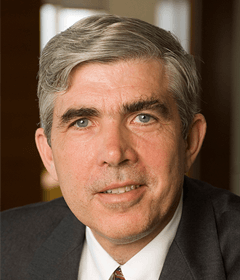Research - Webcasts

While Covid persists as the top issue affecting the global economy, the very high inflation rates seen recently in many parts of the world present a new challenge to investors and central banks alike. We believe the inflation spike is largely driven by economic reopenings. As such, we see the inflation pressures eventually easing substantially in the months to come. Given the Fed’s commitment to tapering we expect risk asset volatility to increase, but we continue to see value in select reopening sectors. If our base case of ongoing global growth and reduced inflation later this year proves correct, we believe reopening spread products and EM should particularly benefit.
COVID-19 Update
- The latest Covid variant, omicron, is proving to be much more transmissible but far less lethal than prior variants, as it appears to focus on the upper respiratory system rather than the lungs.
- While the survivability of omicron is much higher than other variants, it has nevertheless served to inspire a re-acceleration of vaccination rates around the world, which we view as very positive.
- As challenging as dealing with Covid has been, we’re optimistic that societies will begin to learn to live with Covid as it transitions to become endemic rather than pandemic.
Market Review
- Global growth has recently downshifted, and its major tailwinds—central bank accommodation and fiscal stimulus—have been sharply reduced.
- The same headwinds that have limited global growth and inflation for decades—debt, demographics and technological displacement—not only remain in place but have been exacerbated by the pandemic.
- The global recovery of reopening sectors has been delayed, but not derailed.
- In the US, the post-shutdown recovery is broadly complete.
Inflation
- Relative price shocks have been driving inflation; we think this will persist for several months then should fall quickly as production ramps up and demand diminishes.
- Production globally has been largely “shut in,” but we see supply expansion coming when demand diminishes and that combination should bring inflation down.
- While we expect very elevated inflation prints for a few more months, we are already seeing some signs of inflation abating.
- Central banks worldwide must now balance the dual challenge of addressing unacceptably low rates of employment with unacceptably high rates of inflation.
Global Economic Outlook
- Canada, Australia and the UK all have rate hikes planned for this year.
- The EU would prefer to not raise rates in 2022, but rather focus on unwinding its Pandemic Emergency Purchase Program (PEPP), relying only on its Asset Purchase Program (APP). Rate hikes in 2023 are more likely.
- For the US, our 2022 growth forecast is that it should return to its pre-pandemic trend line of approximately 2% to 3%.
- Japan is not looking to raise rates given its low inflation rate and elevated unemployment; it could introduce further fiscal accommodation.
- China’s growth undershoot will likely result in further accommodation, even though its growth rate is higher compared with the rest of the world. We expect about 5% annual growth in 2022.
Investment Themes
- Spread sectors: We continue to think that investors will be better served by individual securities in the spread sectors and can get extra yield versus sovereign rates, which are very well underpinned by the central banks.
- Investment-grade: We rotated heavily into investment-grade credit after the downturn, and have rotated out selectively as sectors have recovered. We continue to like the investment-grade energy sector, especially given conservative management as we think the energy companies have the wherewithal to withstand oil price volatility.
- High-yield: We’ve rotated out of “plain vanilla” high-yield in favor of select opportunities, but continue to believe that high-yield has merit. With defaults falling sharply, we view high-yield credit fundamentals as very favorable, especially with many fallen angels in the sector.
- Bank loans: This sector has been a major focus for us. Given the floating-rate nature of this sector, we view it favorably as short rates are likely going up. Bank loans should see a tail wind if the Federal Reserve (Fed) embarks on its rate hiking cycle.
- Structured product: With mortgage credit lagging corporate credit in the post-Covid recovery, we see select opportunities in the commercial mortgage space, and even more in the residential mortgage space.
- EM debt: Emerging markets (EM) have also lagged the pick-up in global growth, so we believe EM could benefit significantly from the global recovery ahead.
- China: We’re very constructive on Chinese government bonds, given their attractive valuations; they offer a significant yield advantage over their developed market peers.
Q&A Highlights
- We’ve never seen an investment environment this difficult, and we don’t have anything to compare it to in recent history. We’re focused on seeing the global economy reopened, getting global capacity back online while at the same time watching global central bankers carefully as they remove policy support.
- We think real yields will likely rise in 2022. Of course, they are coming from extraordinarily low levels, so the challenge is getting real yields up by having a robust expansion while keeping inflation in check. If global growth continues, which is our base case, rates should rise.
- Regarding inflation, energy prices are likely to remain elevated, which will put pressure on input costs everywhere. We caution against extrapolating higher inflation over a long investment horizon.
- On the US dollar, should we see a balanced growth picture (China and US growth), our base case for the dollar is sideways to down modestly.
- What is the yield curve telling us? The yield curve is the Cassandra of all indicators: destined to always be right but never believed. A flattening curve always comes when growth accelerates and inflation is high, signaling slower growth and inflation ahead. We believe yield-curve flattening is indeed a cautionary signal.
View the presentation slides.


